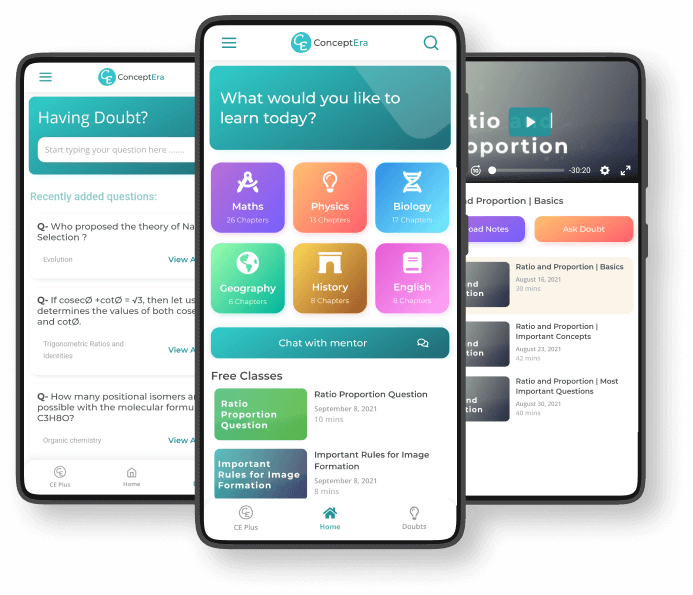a))Answer the following questions : (Answer in 3-4 sentences)
1) How can a memoir be used as a source of history? Describe with an example.
Ans: Memoir is a collection of memories that an individual writes about moments or events of his or her life. Historically, however, memoirs may be defined as a category of biography or autobiography. E.g. Jibansmriti of Rabindranath.
2) The Bengal Renaissance was Kolkata-centric. Analyse the statement.
Ans: The renaissance was centred in Kolkata (Calcutta) and led by Ram Mohun Roy (1772–1833); its luminary poet, Rabindranath Tagore (1861–1941), composed the national anthems of both India and Bangladesh and was awarded the Nobel Prize for Literature in 1913.
3) Why Chuar Rebellion cannot be described as Chuar Revolution?
Ans: The Chuar rebellion cannot be termed as Chuar revolution because the term revolution means to bring about fundamental changes. Such features were not there in Chuar rebellion that’s why it cannot be termed as Chuar revolution.
b) Point out the places in the Indian map :
Area of Santhal Rebellion, Centre of Faraji Movement, Area of Kol Rebellion, Area of Munda Rebellion, Area of Sannyasi and Fakir Revolt
Ans: Area of Santhal rebellion: Jharkhand
Centre of farazi movement: Faridpur
Area of Kol rebellion: Chota Nagpur
Area of Munda rebellion: Ranchi
Area of sanyasi and fakir rebellion: Purnea, Malda, Dhaka, Dinajpur, Rangpur, Cooch Behar and Murshidabad.
c) Fill in the blanks with appropriate information :
| Periodical/ Newspaper/ Novel | Editor | Time Period | Subject |
|---|---|---|---|
| 1) Banga Darshan | Bankim Chandra Chatterjee | April 1872 | It was a journal. |
| 2) Som Prakash | Ishwar Chandra Vidyasagar | 15 November 1858 | It was a newspaper. |
| 3) Bamabodhini | Umesh Chandra Dutta | 1863 | It was a periodical that focuses on womenfolk. |
| 4) Gram Barta Prakashika | Kangal Harinath Majumdar | 1863 | It was a journal that exposed to the public the conditions of villages under British colonial rule. |
| 5) Hutom Pyachar Naksha | Kaliprasanna Sinha | 1862 | It was a book that looked at the changes that had been taking place. |
d) Fill in the blanks with appropriate information :
| Revolt/Rebellion | Time | Area | Leadership | Reason | Impact |
|---|---|---|---|---|---|
| Santhal | 1855-56 | Chotanagpur | Sidhu, Kanu | Santal wanted to set up a government of their own because they were fed up with British rulers and their agents. | The rebellions of the Santals forced the British administrators to reorganize the districts to create a separate district of santal Parganas. |
| Munda | 1899-1900 | Chotanagpur | Birsa Munda | Beth – Begari was the main reason that led Munda’s to burst into rebellion. | Forced Labour or beth – begari was declared illegal. |
| Indigo | 1859-1860 | West Bengal | Digambar Biswas and Charan Biswas of Chuagacha in Jessore. | Forced the labours to grow indigo and did not get the wage equal to their labour. | The farmers refused to grow indigo and they attacked the policemen who intervened. |
| Wahabi | 1834 | North-24 Pargana | Titumir | Whose stress was to condemn any change into the original Islam and return to its true spirit. | To return to the Islam of the Prophet Mohammed and the three successive generations of followers. |
| Farazi | 1820 | Faridpur, in present Bangladesh. | Haji Shariatullah | The movement was to spread the new found realizations of Shariatullah about Islam and following the fard. | It gave encouragement to the Muslims at the time when they were demoralized by the oppression they suffered from the Hindus and the British. |
5) Discuss the relevance of the Women History writing.
Ans: It includes the study of the history of the growth of woman’s rights throughout recorded history, personal achievement over a period of time, the examination of individual and groups of women of historical significance, and the effect that historical events have had on women.
6) Why Grambarta Prakashika was an exceptional magazine?
Ans: Grambarta Prakashika was an exceptional magazine because it led a rentless struggle to promote education in bengal. The journal did not ignore the contemporary political matters of importance and it also create public opinion against exploitation.
7) What was the opinion of the contemporary Bengali intelligentsia about the Indigo Rebellion?
Ans: The Bengali middle class supported the peasants wholeheartedly. Bengali intellectual Harish Chandra Mukherjee described the plight of the poor farmer in his newspaper The Hindu Patriot. However the articles were overshadowed by Dinabandhu Mitra, who depicted the situation in his play Nil Darpan.His play created a huge controversy which was later banned by the East India Company to control the agitation among the Indians.

